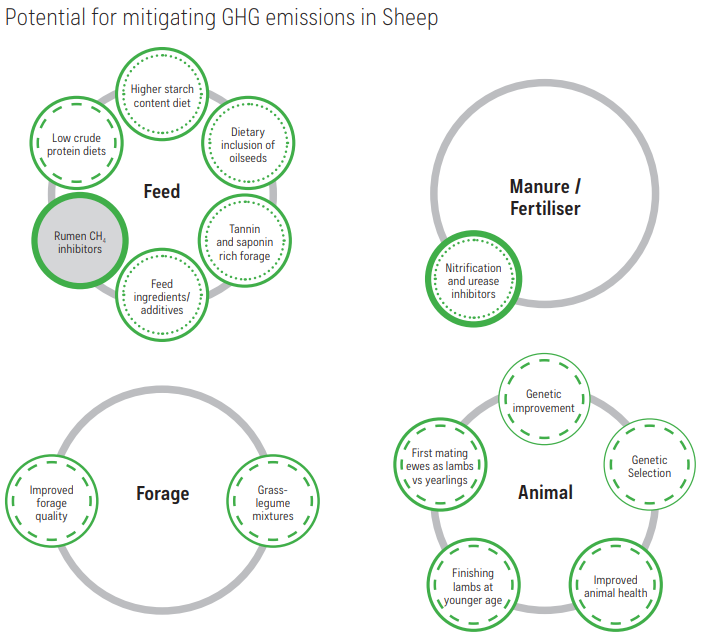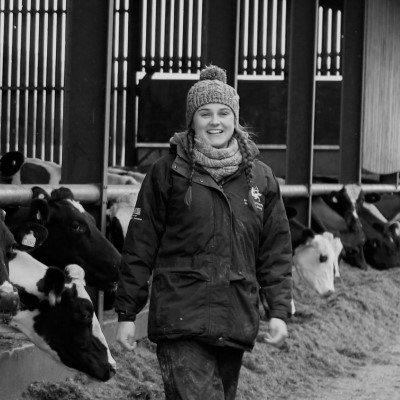CIEL | Blog: How can sheep farmers reduce carbon emissions?
Phil Bicknell

The livestock industry is often scrutinised for its carbon footprint even though many farmers are actively working to reduce emissions and farm in the most sustainable manner.
Despite this, more can always be done. CIEL’s Net Zero & Livestock: How Farmers can reduce emissions report launched in 2022 provides sheep farmers with practical tips to help reduce emissions on-farm, which we list in the blog below:
-
Complete regular carbon audits using a reliable carbon calculator
Completing farm carbon audits on an annual basis will help to establish a carbon footprint baseline. This will help identify any issues which could be contributing to on-farm emissions and provide a pathway to implement changes that could help futureproof farm businesses.
A farm’s carbon footprint can be measured using a reliable carbon calculator.
-
Look at flock management while maintaining a high level of production efficiency
Careful and considered flock management will allow farmers to maintain a high level of production efficiency as a healthy animal is often a much more sustainable animal.
Greater production efficiencies on-farm can be achieved by:
- Reducing age at first lambing
- Increasing lambing rate
- Reducing lamb losses
- Enabling high lamb growth rates
-
Improve the quality and utilisation of forage
Forage is a crucial element in livestock diets which can greatly influence the performance of breeding, growing and finishing sheep. Improving both the quality and utilisation of forage is critically important and can help to promote the health, and subsequent performance, of an animal.
Forage quality can be improved by:
- Harvesting early when conditions are right
- Increasing grazing frequency
- Decreasing regrowth intervals where appropriate
-
Reduce the use of artificial fertiliser
Reducing the use of artificial fertiliser is another way sheep farmers can reduce their carbon footprint.
Instead of relying on artificial fertilisers to produce high quality forage, farmers can maintain or enhance sward productivity by, for example, including legumes in pasture mixes. They can also look at ways to promote soil health through effective grazing management.
-
Consider use of controlled release and protected urea fertilisers
Farmers should consider the use of controlled release fertilisers and protected urea fertilisers if they are looking to reduce emissions.
Applications of manure and fertiliser should be timed to optimise plant nutrient uptake and take account of soil nutrient status. Soil testing will be essential to the optimisation of this.
-
Look at adjusting livestock diets
Looking more closely at the overall diet of an animal and how feed is being produced can be a good idea if you are looking to reduce emissions as there are a wide variety of feed and nutrient options available for sheep.
For example, farmers can increase starch and concentrate proportions in sheep diets, within recommended guidance levels, to reduce CH4 production per unit of feed intake.
In addition to reducing emissions, depending on baseline diet and management, this strategy may also support an increase in liveweight gain. Wider environmental considerations associated with the carbon footprint of feed components and farm nutrient balance, such as the emissions cost of production, should be considered, if farmers are looking to reduce carbon footprints.
-
Focus genetic improvement on component traits
Finally, genetic improvements can help reduce emissions from breeding flocks if focused on component traits, such as productivity relative to ewe size, feed efficiency, longevity, health, growth and carcass traits. Such information should be part of farm decision making now, to deliver long-term emission reduction.
To find out more about reducing emissions in sheep flocks, read our practical guide here.


Phil Bicknell, Director
After joining the CIEL the team in 2021 as Head of business development, Phil became director in April 2023. Continuing to steer CIEL’s strategic development to ensure we successfully deliver on our vision to be the front door to research and innovation for the livestock and aquaculture sectors. In addition to leading the team and operations at CIEL.
Growing up on the family livestock farm, Phil is an agricultural economics graduate from the University of Reading and his career includes a range of agri-food roles.
Phil led the 50 strong market intelligence team at the Agricultural and Horticultural Development Board, equipping farmers and processors with the insight to manage market volatility, profitability and policy change. He was also chief economist at the National Farmers Union, spearheading the evidence to support a range of lobbying activity. Phil’s other roles include specialising in agri-trade issues at the US Department of Agriculture and advising a range of agribusiness clients with Bidwells.







